Are you a Quiet Speculation member?
If not, now is a perfect time to join up! Our powerful tools, breaking-news analysis, and exclusive Discord channel will make sure you stay up to date and ahead of the curve.
I often hear Modern players complain Wizards isn't throwing us enough new cards. But seriously, have they visited Tarkir recently? Between Siege Rhino and Tasigur, the Golden Fang, Atarka's Command and Monastery Swiftspear, the Onslaught fetchlands, Collected Company, and a card so good it got banned in Legacy and restricted in Vintage, Tarkir block felt like a Return to Ravnica all over again. Many of these cards were instant winners from the second they were spoiled: it took about 15 minutes for the first cries of "ban Atarka's Command" to echo across the internet. Other cards took longer to get recognized: Rhino saw almost zero play for over a month. Now with June starting and big Modern events around the corner, we are seeing more and more of a card that many players overlooked in the DTK release, a card instrumental to the recent rise of Grixis Delver/Twin and Jund.
Atarka may have gotten early attention, but Kolaghan's Command wasted no time making up for lost ground. The Rakdos-colored Command is poised to be a huge Modern player in the coming months. In this article, I will discuss the card's rise, its individual strengths and modes, and its overall effect on the format. Command might not be for every Modern deck, but it's an integral part of the new Modern. If you're already using the card, this article will affirm your decision. If not, this article will hopefully convince you of Command's power.
[wp_ad_camp_1]
The Rise of Kolaghan's Command
When DTK spoilers were finished, Command received decidedly mixed reviews. I gave this card a favorable review in our DTK evaluation article, and have been excited to see it live up to expectations. 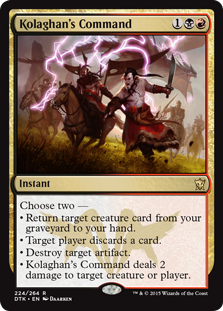 But Carsten Kotter didn't touch it in his SCG review of DTK in eternal formats (SCG premium). Pat Chapin and Shaun McLaren gave it a brief nod in their Standard-focused reviews, and it was only Reid Duke that gave Command its much-deserved props in one of his own DTK-in-Modern articles. The community was also lukewarm, with players questioning its importance and what it added to existing decks. In all those sources, the Command discussion was largely the same. On one hand, reviewers thought the card was versatile, enabled 2-for-1s, and generated value and card advantage. But on the other, it didn't have a home, felt a little expensive, and had a power level that felt too modest (even underpowered) for Modern. Comparing Shock to Lightning Bolt felt like comparing Cancel to Counterspell. And who the heck wanted to play Grim Harvest or Shatter anyway, even if as part of a potentially-valuable package deal?
But Carsten Kotter didn't touch it in his SCG review of DTK in eternal formats (SCG premium). Pat Chapin and Shaun McLaren gave it a brief nod in their Standard-focused reviews, and it was only Reid Duke that gave Command its much-deserved props in one of his own DTK-in-Modern articles. The community was also lukewarm, with players questioning its importance and what it added to existing decks. In all those sources, the Command discussion was largely the same. On one hand, reviewers thought the card was versatile, enabled 2-for-1s, and generated value and card advantage. But on the other, it didn't have a home, felt a little expensive, and had a power level that felt too modest (even underpowered) for Modern. Comparing Shock to Lightning Bolt felt like comparing Cancel to Counterspell. And who the heck wanted to play Grim Harvest or Shatter anyway, even if as part of a potentially-valuable package deal?
The metagame results are in, and it turns out a lot of players and decks want to play Command. This isn't to accuse authors of mis-evaluating the card. Most writers legitimately saw Command's viability and predicted it would be at least decent. But as Grixis Delver and Grixis Twin, along with the almighty Jund, continue to rack up results, the card is exceeding expectations by the week. To explain Command's continual rise, and why some early reviewers didn't fully appreciate its power, we don't want to start with Command's modes themselves. We need to look at the format as a whole and how Command fit into it.
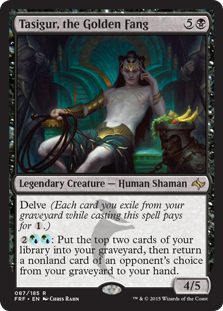 Back when DTK was spoiled, Modern was not a red/black format. It was the Rhino format, the UR Twin format, and the Infect/Amulet/Burn format. Delver had been dead for weeks, Jund had been dead for over a year, and there seemed to be few reasons to move back to red and black. Then came Tasigur, the Golden Fang. Black Tarmogoyf fundamentally changed Modern, opening up a string of decks that could now run their own "Goyf" alongside color pairings they wouldn't otherwise have access to. Tasigur allowed URx decks to keep the color-defining Snapcaster Mage and Bolt, but also access discard and hard removal you couldn't get in green, red, or blue. The black splash gave historically UR or Temur decks a new edge in a metagame that rewarded early interaction (e.g. Inquisition of Kozilek) and demanded removal that could outgun Bolt and Roast (e.g. Terminate and Murderous Cut). That shift would have been impossible without Tasigur, because those cards weren't worth it if you lost Goyf in the process.
Back when DTK was spoiled, Modern was not a red/black format. It was the Rhino format, the UR Twin format, and the Infect/Amulet/Burn format. Delver had been dead for weeks, Jund had been dead for over a year, and there seemed to be few reasons to move back to red and black. Then came Tasigur, the Golden Fang. Black Tarmogoyf fundamentally changed Modern, opening up a string of decks that could now run their own "Goyf" alongside color pairings they wouldn't otherwise have access to. Tasigur allowed URx decks to keep the color-defining Snapcaster Mage and Bolt, but also access discard and hard removal you couldn't get in green, red, or blue. The black splash gave historically UR or Temur decks a new edge in a metagame that rewarded early interaction (e.g. Inquisition of Kozilek) and demanded removal that could outgun Bolt and Roast (e.g. Terminate and Murderous Cut). That shift would have been impossible without Tasigur, because those cards weren't worth it if you lost Goyf in the process.
The second metagame context, one more relevant for Jund, was the renewed relevance of Bolt. This shift incentivized a return to red and revived interest in red cards that paired with Bolt (e.g. Huntmaster of the Fells). If Bolt had remained an inferior choice to Path to Exile, there would have been no reason to switch from Abzan into Jund. And if Abzan had remained the BGx deck of choice, Command alone would never have swung the pendulum back. But once Jund supplanted Abzan on the strengths of Bolt (or at least became strong enough to rival it), Command immediately found its second home outside of Grixis.
Tying those two metagame developments together, we see why Kolaghan's Command found its home. In the case of Grixis, it was Tasigur (not Command) that set the URB groundwork. Command just fit into those decks after Tasigur enabled them. For Jund, the metagame shifted to make the deck stronger than its Abzan alternatives. Command only slotted in afterwards to make it stronger.
Evaluating Kolaghan's Command's Modes
Now that we've identified the preconditions for Command's rise in Modern, we can look at the card itself. Obviously, it wouldn't have been enough for Command to just be a red/black card (refer to Silumgar's Commands extensive play in Grixis decks...). The Command's modes still had to be strong, and this section is a discussion of those strengths.
When I first drafted this article, I alternated between describing Command as one spell with four modes or as six different spells in one slot. Although I think the six-in-one model is interesting and potentially helpful, it's perhaps a bit too prescriptive. I don't want players to look at the six "spells" and just list scenarios where they are useful. Instead, I want players to be able to evaluate all four modes independently and then apply those modes dynamically in a game. As some wise man once said, if you give a man Kolaghan's Command, he wins for a day. If you teach a man Kolaghan's Command, he wins for a lifetime.
"Return target creature card from your graveyard to your hand."
Effects in the tradition of Grim Harvest and Raise Dead have never really been playable. The closest were Grim Discovery , which at least provided card advantage, and Rise // Fall, which had both card advantage elements, versatility, and Snapcaster synergy. Command blows those earlier versions out of the water. In Grixis and Jund, you are all but guaranteed to recur a high-value threat. Tasigur, Gurmag Angler, Goyf, and Huntmaster are already hard to answer. If your opponent invests in Terminate, Roast, Mana Leak, Lily, or some other one-shot effect, this mode at least ensures you come out even. But if your opponent had to double-block or double-burn one of your creatures, now you're a card ahead. Bonus points for killing the Lily that nuked your Tasigur and then bringing Tasigur back for round 2. Command is also strong at recurring removal-magnets like Dark Confidant, Delver, Pyromancer, and other early drops that you might want back in the mid-to-late game (especially Bob), but are probably killed the turn after they land.
, which at least provided card advantage, and Rise // Fall, which had both card advantage elements, versatility, and Snapcaster synergy. Command blows those earlier versions out of the water. In Grixis and Jund, you are all but guaranteed to recur a high-value threat. Tasigur, Gurmag Angler, Goyf, and Huntmaster are already hard to answer. If your opponent invests in Terminate, Roast, Mana Leak, Lily, or some other one-shot effect, this mode at least ensures you come out even. But if your opponent had to double-block or double-burn one of your creatures, now you're a card ahead. Bonus points for killing the Lily that nuked your Tasigur and then bringing Tasigur back for round 2. Command is also strong at recurring removal-magnets like Dark Confidant, Delver, Pyromancer, and other early drops that you might want back in the mid-to-late game (especially Bob), but are probably killed the turn after they land.
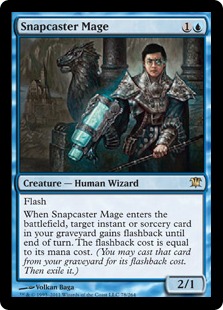 But the real creature that pushes this mode over the top in Grixis is Snapcaster Mage. Casting Snapcaster to flashback a binned Command is already a lot of value. But casting Command with a dead Snapcaster in the yard is just gamebreaking. This returns the Mage, who already returned a spell and maybe blocked a creature, and then puts you up another card from the second mode. Then you recast Tiago and flashback the Command, getting a straight 2-for-1 off the second Command and a body on the board. Where does that leave the boardstate? You have now invested just 2 cards to put a creature in play and either kill 3 things or generate 3 cards worth of value. All for two separate investments of 3 and 5 mana, and all at instant speed. Company decks are making similar plays with Eternal Witness, but this is actually better because it's not random and it's much cheaper. It's hard to play fair magic when Grixis decks can run this playline or just topdeck into it in the midgame. This synergy is one of the top reasons as to why URB decks are some of the decks to beat in Modern right now.
But the real creature that pushes this mode over the top in Grixis is Snapcaster Mage. Casting Snapcaster to flashback a binned Command is already a lot of value. But casting Command with a dead Snapcaster in the yard is just gamebreaking. This returns the Mage, who already returned a spell and maybe blocked a creature, and then puts you up another card from the second mode. Then you recast Tiago and flashback the Command, getting a straight 2-for-1 off the second Command and a body on the board. Where does that leave the boardstate? You have now invested just 2 cards to put a creature in play and either kill 3 things or generate 3 cards worth of value. All for two separate investments of 3 and 5 mana, and all at instant speed. Company decks are making similar plays with Eternal Witness, but this is actually better because it's not random and it's much cheaper. It's hard to play fair magic when Grixis decks can run this playline or just topdeck into it in the midgame. This synergy is one of the top reasons as to why URB decks are some of the decks to beat in Modern right now.
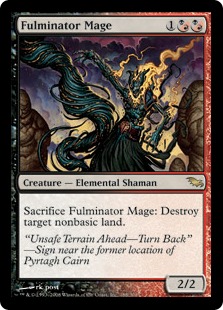 Jund obviously doesn't get Tiago, but it still derives value from recurring Goyf, Confidant, or its high-end creatures like Huntmaster or Olivia Voldaren. Jund, however, does get some Tiago-lite value once it brings Fulminator Mage out of the sideboard. This improves a number of key matchups. Chaingun Rain of Tears is brutal in all the midrange grindfests where cards like Gavony Township, Stirring Wildwood, and Celestial Colonnade provide lategame value. Fulminator also gives Jund renewed viability in the RG Tron matchup. It's much harder for Tron to recover from losing Urzatron lands on turn 3 and turn 5 than it was for them to stabilize after losing just one. Same goes for Amulet Bloom, especially if Jund can hold the line on turns 1-2 until Mage can start controlling the board. Command's recursion enables all of these synergies.
Jund obviously doesn't get Tiago, but it still derives value from recurring Goyf, Confidant, or its high-end creatures like Huntmaster or Olivia Voldaren. Jund, however, does get some Tiago-lite value once it brings Fulminator Mage out of the sideboard. This improves a number of key matchups. Chaingun Rain of Tears is brutal in all the midrange grindfests where cards like Gavony Township, Stirring Wildwood, and Celestial Colonnade provide lategame value. Fulminator also gives Jund renewed viability in the RG Tron matchup. It's much harder for Tron to recover from losing Urzatron lands on turn 3 and turn 5 than it was for them to stabilize after losing just one. Same goes for Amulet Bloom, especially if Jund can hold the line on turns 1-2 until Mage can start controlling the board. Command's recursion enables all of these synergies.
"Target player discards a card."
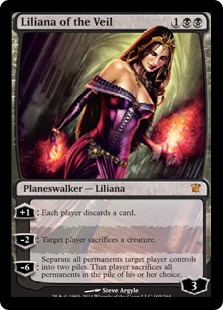 One of Modern's coolest cards has always been Funeral Charm (and its colorshifted cousin, Piracy Charm). Instant-speed discard is rare in Magic and with good reason: being in topdeck mode on its own isn't fun. But being in topdeck mode and having your entire turn blown out by an instant-speed discard spell? That's about as fun as watching Eggs go off back in 2013. The Modern midrange game is often defined in topdecks and Command is great at exploiting this. For instance, BGx players often win the mirror by boarding out some number of less valuable topdecks (e.g. targeted discard) and jamming in topdeckable threats in their place. That's where Command comes in, blowing up a draw step on top of an extra mode of value (typically recursion in the midrange grindfest). Liliana of the Veil is a big contributor to this playstyle. An early Lily wrecks the hand and forces an opponent into topdeck mode. Command finishes the job, turning topdecks into Time Walks and overall shoring up Jund's hand-control game.
One of Modern's coolest cards has always been Funeral Charm (and its colorshifted cousin, Piracy Charm). Instant-speed discard is rare in Magic and with good reason: being in topdeck mode on its own isn't fun. But being in topdeck mode and having your entire turn blown out by an instant-speed discard spell? That's about as fun as watching Eggs go off back in 2013. The Modern midrange game is often defined in topdecks and Command is great at exploiting this. For instance, BGx players often win the mirror by boarding out some number of less valuable topdecks (e.g. targeted discard) and jamming in topdeckable threats in their place. That's where Command comes in, blowing up a draw step on top of an extra mode of value (typically recursion in the midrange grindfest). Liliana of the Veil is a big contributor to this playstyle. An early Lily wrecks the hand and forces an opponent into topdeck mode. Command finishes the job, turning topdecks into Time Walks and overall shoring up Jund's hand-control game.
As you can probably tell from the above paragraph, the discard clause is pretty narrow. Some might call it "limited", or even Command's weakest mode. I wouldn't go that far. In situations where it's strong, it's really strong. Locking a BGx or URx player out of a draw step is unfair. If they weren't sandbagging cards to begin with, this really is a straight Time Walk in the mid- or late-game.  And if they were sandbagging, they were probably losing to pressure anyway. That said, there are lots of situations where you don't want to use this mode. In fact, knowing when not to discard randomly is more important than knowing when to use it. There are two things you need to worry about here. The first is fueling delve or enemy Goyfs. This danger is most important in Grixis decks, where you don't even have a Goyf of your own to benefit from a new card type in the yard. But it's also important in any matchup where you are facing delve cards, even if Goyf isn't present. The difference between a 3 mana and a 2 mana Tas/Angler is enormous: that's mana for Spell Snare, Inquisition, or Bolt. Or even Remand, Leak, or Terminate. The tempo blowout from turn 3 Tas/Angler into Remand alone is probably game over. Or against Abzan or Jund, allowing them to play Inquisition or Thoughtseize to clear the path into turn 3 Tas.
And if they were sandbagging, they were probably losing to pressure anyway. That said, there are lots of situations where you don't want to use this mode. In fact, knowing when not to discard randomly is more important than knowing when to use it. There are two things you need to worry about here. The first is fueling delve or enemy Goyfs. This danger is most important in Grixis decks, where you don't even have a Goyf of your own to benefit from a new card type in the yard. But it's also important in any matchup where you are facing delve cards, even if Goyf isn't present. The difference between a 3 mana and a 2 mana Tas/Angler is enormous: that's mana for Spell Snare, Inquisition, or Bolt. Or even Remand, Leak, or Terminate. The tempo blowout from turn 3 Tas/Angler into Remand alone is probably game over. Or against Abzan or Jund, allowing them to play Inquisition or Thoughtseize to clear the path into turn 3 Tas.
 The second big discard danger are cards like Loxodon Smiter and Wilt-Leaf Liege (and Lingering Souls, to a lesser extent). Thankfully, the metagame has shifted away from these bullets. As Abzan falls, Abzan Liege also slides into a hard decline. Zoo decks are in a three-way battle for supremacy, and the Naya variants using Smiter have no clear edge over the Domain variants with Tribal Flames or the "Gruul Zoo" types with stuff like Flinthoof Boar. Hatebears and the other GWx variants are still something to worry about, but those decks are also losing popularity to Abzan Company, so they also aren't too common. Even so, know your matchup and opponent before using this mode. A misplayed Command into an active Liege is a disaster, even moreso than inadvertently fueling delve to enable an earlier Tasigur. At least in Tas's case the opponent still has to expend resources to cast him. But giving the opponent a free Smiter or Liege is too much tempo turnaround to recover from.
The second big discard danger are cards like Loxodon Smiter and Wilt-Leaf Liege (and Lingering Souls, to a lesser extent). Thankfully, the metagame has shifted away from these bullets. As Abzan falls, Abzan Liege also slides into a hard decline. Zoo decks are in a three-way battle for supremacy, and the Naya variants using Smiter have no clear edge over the Domain variants with Tribal Flames or the "Gruul Zoo" types with stuff like Flinthoof Boar. Hatebears and the other GWx variants are still something to worry about, but those decks are also losing popularity to Abzan Company, so they also aren't too common. Even so, know your matchup and opponent before using this mode. A misplayed Command into an active Liege is a disaster, even moreso than inadvertently fueling delve to enable an earlier Tasigur. At least in Tas's case the opponent still has to expend resources to cast him. But giving the opponent a free Smiter or Liege is too much tempo turnaround to recover from.
"Destroy target artifact."
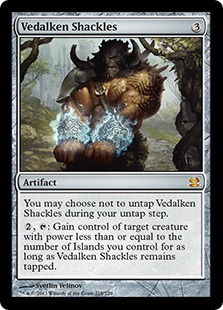 If I was forced to pick one mode that makes Command good, it's this one. Modern is an extremely diverse (read: unpredictable) format where people are playing a lot of varied (read: unexpected) threats. How many times have you been playing a fair game of Modern when the opponent slams down something bizarre like Vedalken Shackles? This isn't early 2012! This is the post-Decay world! Same goes for Batterskull, Ensnaring Bridge, Crucible of Worlds, Sword of Fire and Ice, and all sorts of other unexpected artifacts you want a game 1 answer to. It's also true of more mainstream cards like Spellskite, Amulet of Vigor, Oblivion Stone, Aether Vial, and other artifacts you should expect in tier 1 or tier 2 decks. In all those cases, Command gives you a game 1 answer for these cards, many of which must be answered or they take over a game. But unlike other artifact removal spells, Command does so without sacrificing slot flexibility in other matchups. This is one reason Decay was so good, and Command does a great Decay initiation in that capacity.
If I was forced to pick one mode that makes Command good, it's this one. Modern is an extremely diverse (read: unpredictable) format where people are playing a lot of varied (read: unexpected) threats. How many times have you been playing a fair game of Modern when the opponent slams down something bizarre like Vedalken Shackles? This isn't early 2012! This is the post-Decay world! Same goes for Batterskull, Ensnaring Bridge, Crucible of Worlds, Sword of Fire and Ice, and all sorts of other unexpected artifacts you want a game 1 answer to. It's also true of more mainstream cards like Spellskite, Amulet of Vigor, Oblivion Stone, Aether Vial, and other artifacts you should expect in tier 1 or tier 2 decks. In all those cases, Command gives you a game 1 answer for these cards, many of which must be answered or they take over a game. But unlike other artifact removal spells, Command does so without sacrificing slot flexibility in other matchups. This is one reason Decay was so good, and Command does a great Decay initiation in that capacity.
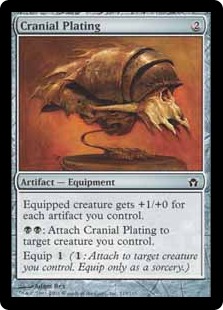 The other reason that Command's Shatter mode is so strong is Affinity. Affinity is one of those tier 1 decks you can't forget about or ignore but also don't want to prepare for. No one really wants to stick 2-3 Stony Silence in their sideboard if those cards are only relevant against one tier 1 deck and a handful of tier 2-3 decks you probably will never see at an event (although maybe that's less true after the Tron-filled weekend of June 6th and 7th). And absolutely no one wants to maindeck anti-Affinity measures in game 1. Command gives decks like Grixis and Jund a real fighting chance in all games without sacrificing slot flexibility. Every time you cast this card against Affinity, you are getting a 2-for-1. But unlike similar 2-for-1s like Pyroclasm or Electrolyze, you aren't just killing Affinity's weakest cards. You are actively blowing up Plating, Inkmoth, and any Master of Etheriums that are still seeing play. Preboarding against powerful, albeit niche, strategies like Affinity is always good. If you can do it in such a versatile package as Command, that's almost always a good inclusion.
The other reason that Command's Shatter mode is so strong is Affinity. Affinity is one of those tier 1 decks you can't forget about or ignore but also don't want to prepare for. No one really wants to stick 2-3 Stony Silence in their sideboard if those cards are only relevant against one tier 1 deck and a handful of tier 2-3 decks you probably will never see at an event (although maybe that's less true after the Tron-filled weekend of June 6th and 7th). And absolutely no one wants to maindeck anti-Affinity measures in game 1. Command gives decks like Grixis and Jund a real fighting chance in all games without sacrificing slot flexibility. Every time you cast this card against Affinity, you are getting a 2-for-1. But unlike similar 2-for-1s like Pyroclasm or Electrolyze, you aren't just killing Affinity's weakest cards. You are actively blowing up Plating, Inkmoth, and any Master of Etheriums that are still seeing play. Preboarding against powerful, albeit niche, strategies like Affinity is always good. If you can do it in such a versatile package as Command, that's almost always a good inclusion.
"Kolaghan's Command deals 2 damage to target creature or player."
If you look at this mode and just see Shock then yes, it seems underwhelming. This is one reason the card was mis-evaluated in DTK's release: Shock obviously doesn't cut it in Modern, so this mode feels like it won't either. Don't think of it that way. Instead, think of this as your guaranteed upside to whatever other mode you are using. More than any other mode, this is the one that ensures 2-for-1s. There are just so many matchups where you will be able to kill something. True, you might not be killing the scariest creature on the board, but you are still adding one card to your 2-for-1 equation in almost every matchup. Just to demonstrate the mode's relevance, here's a quick list of tiered decks with some of their valuable targets.
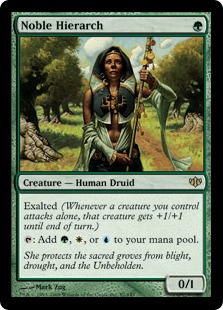 Jund/Abzan: Dark Confidant (Jund), Scavenging Ooze (both), Noble Hierarch (Abzan), Liliana of the Veil (both, particularly if she goes -1 after a turn 3 drop)
Jund/Abzan: Dark Confidant (Jund), Scavenging Ooze (both), Noble Hierarch (Abzan), Liliana of the Veil (both, particularly if she goes -1 after a turn 3 drop)- Twin variants: Snapcaster Mage, Pestermite
- Grixis variants: Delver of Secrets, Young Pyromancer, Snapcaster Mage, Vendilion Clique
- Affinity: Inkmoth Nexus, Vault Skirge, Steel Overseer, etc.
- Burn: Goblin Guide, Eidolon of the Great Revel, Grim Lavamancer
- Abzan Company: Noble Hierarch, Birds of Paradise, Anafenza, Kin-Tree Spirit, Melira, Sylvok Outcast, etc.
- Elves: Nettle Sentinel, Heritage Druid, Elvish Archdruid, etc.
- Infect: Noble Hierarch, Blighted Agent, Inkmoth Nexus, Glistener Elf
- Merfolk: Lord of Atlantis, Master of the Pearl Trident, Silvergill Adept, etc.
A 3 mana Shock obviously won't cut it on its own. But getting that Shock-based value tacked on to another effect? That's what makes the card. As a 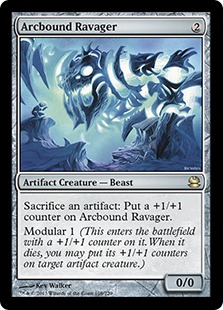 great example of this, you actually feel bad using this against Affinity. Shatter blows up one of their threats and Shock kills another. That's at least a 2-for-1 in almost all board states in the Affinity matchup. You can even get 3-for-1s with Command if you disable metalcraft on Etched Champion by blowing up two of the enabling artifacts. Then just block the naked 2/2 Champion and laugh. When throwing Commands into active Arcbound Ravagers, remember that even if one mode is countered, the other mode will still go through as long as its targets are legal upon resolution. So if you blow up a Ravager with Shatter and recur a Huntmaster with the Raise effect, you still get the Huntmaster even if the Ravager sacrifices itself in response. True, Command will not resolve if you zap a target and break another and both get sacrificed to Ravager, but that won't matter because the end result (a 2-for-1) will still be the same. And if nothing else, you can always just fire a mini-Lava Spike to the dome, which is not irrelevant in Grixis decks that switch to an aggressive Burn strategy off Bolt and Snapcaster.
great example of this, you actually feel bad using this against Affinity. Shatter blows up one of their threats and Shock kills another. That's at least a 2-for-1 in almost all board states in the Affinity matchup. You can even get 3-for-1s with Command if you disable metalcraft on Etched Champion by blowing up two of the enabling artifacts. Then just block the naked 2/2 Champion and laugh. When throwing Commands into active Arcbound Ravagers, remember that even if one mode is countered, the other mode will still go through as long as its targets are legal upon resolution. So if you blow up a Ravager with Shatter and recur a Huntmaster with the Raise effect, you still get the Huntmaster even if the Ravager sacrifices itself in response. True, Command will not resolve if you zap a target and break another and both get sacrificed to Ravager, but that won't matter because the end result (a 2-for-1) will still be the same. And if nothing else, you can always just fire a mini-Lava Spike to the dome, which is not irrelevant in Grixis decks that switch to an aggressive Burn strategy off Bolt and Snapcaster.
The Future of Kolaghan's Command
We are only a week into summer, and already Command is making its mark on major paper events. Josh Ravitz rode a pair of Commands to a 3rd place Jund finish at the SCG Invitational in Columbus. On the SCG Open side of the event, we saw multiple commands in both the 6th place Grixis Twin and the 8th place Jund finishes. This was in addition to seven decks using the card in the Invitational's 7-1 or better Modern deck bracket. I expect to see similar finishes in the weeks to come, all based on the strengths described in this article.
Grixis and Jund are back in Modern, which means Kolaghan's Command is here to stay. You need a very good reason to not run this card in those colors, and I predict there won't be a single Grixis or Jund list in any of the upcoming T16s that doesn't rock it. If you are playing those decks, use the card wisely and you will be rewarded. If you are playing against them, respect it and know its modes or you will be punished.


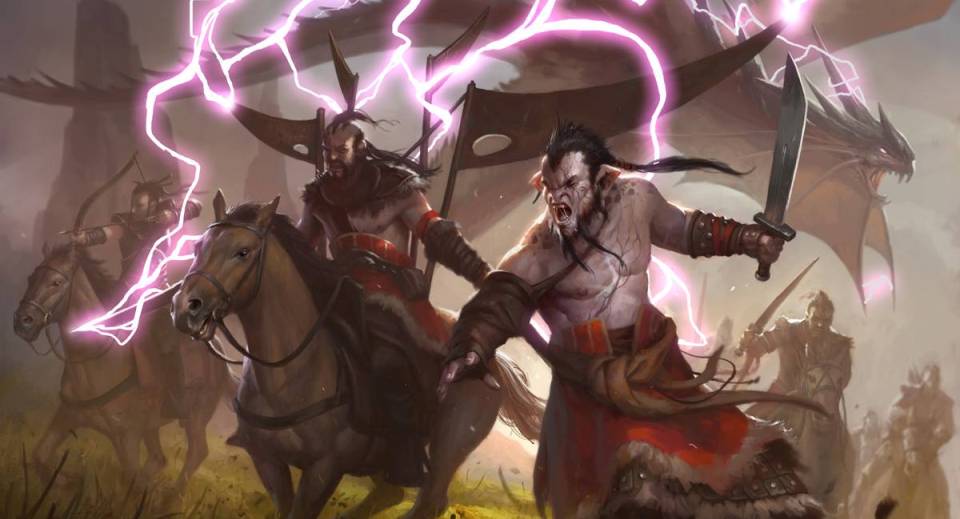



Umm… I can’t read this. Things keep getting jumbled up and repeated.
Mostly everything before “Evaluating Kolaghan’s Command’s Modes”
There was an HTML error that didn’t show up in the preview but showed up here. Fixed it!
I love me some Kolaghan’s Command, and I’m glad it’s getting some shine time right now. One thing that I think is up for debate, though, is how many copies of this bad boy make a typical deck’s 75. I’ve been seeing 2-3 in Jund, 1-2 in Grixis Delver, and it’s almost always only 1 in the SB. What’s your take on this?
I would go 2 in almost all lists. 3 seems excessive, even if you are running Snapcaster to maximize KC value. But definitely get that 3rd copy in the SB, because there will be matchups where you want all 3 at your disposal.
Kolaghan’s Command is obviously very powerful against Affinity, but I’ve heard rumblings from some that it makes the deck unplayable. I have an inkling that these claims are greatly exaggerated and am curious as to your thoughts?
I don’t know about unplayable, but it definitely makes it way harder, and warrants some main deck changes going forward. I played Affinity at a PPTQ yesterday and ran into 3 Command decks in 5 rounds (spoilers: I won none of those rounds). It’s pretty brutal, coupled with Snapcaster as outlined in this article and the rise of Lightning Bolt, I think Affinity is the weakest (metagame-wise) that it has been in a long time. I was already running 3 maindeck Etched Champion, and am seriously considering moving 1 or even both of my Spellskite from the sideboard to the main deck, along with throwing in a Welding Jar for good measure. We’ll see how it all shakes out in the coming weeks, but as long as hype for Grixis Delver/Twin and Jund is super high, Affinity is definitely not a good metagame choice.
In my opininon, adding welding jar will do you no good. terminate will just laugh at it. I think the affinity version with stubborn denial is a much better choice.
I meant Jar for answering (at least partially) Command, but you’re right that Terminate is pretty rough on that plan. However, I’ve never been a fan of counter-magic in Affinity, it forces you to slow down your board development to hold up mana, and being fast and hyper-aggressive is what makes Affinity good in the first place. Testing may prove me wrong, but for the time being I’d be very hesitant to add Stubborn Denial to my deck.
I think two Stubborn Denial in the sideboard is a good plan to have, since Game 2/3 is a very different beast to Game 1 (which is where the hyper aggressive strategy shines).
Seems very unlikely. We saw a number of Affinity lists in the T8s and T16s of both the SCG Open and SCG Invitational this weekend, and those lists had to fight through a Command-packed field to get there. We are also seeing similar trends online, where Affinity remains viable despite tons of Grixis and Jund decks with 2+ KC’s between their maindeck and sideboard. I do think we will start to see more versatility in Affinity, whether in Thoughtseize or Stubborn Denial. But Affinity is unlikely to go anywhere, even with the rise of KC. Indeed, all the KC decks are cutting into the metagame share of Stony Silence decks, those Abzan and UWx decks which are likely to bring in the enchantment out of the board.
I am not ashamed to admit I was amongst the first people to bash on the Command and I’m now going to tell y’all why. Mostly because I find it valuable for people to have access to different points of view whenever they can, plus it makes for a way better story (which this is):
So, I’d like to begin from the start – DTK spoiler season. After the initial hyper of “ermahgerd new command cycle lel rip #cryptic2inc”, the non-Standard community was disappointed. You have to understand the context here – by the time Kolaghan’s Command was revealed we were already 3 cards deep into Letdown Town. And before any Atarka believers jump on this, let me run you through it.
Ojutai’s Command – this was supposed to be the new Cryptic. It’s as close as we’ve ever come, yet it’s still a huge disappointment. It has the draw-a-card-clause on it, which just like on Cryptic Command ensures value on whatever else you chose to do… until it doesn’t. You see, it’s other modes are so bad that even drawing cards can’t make up for them. Yes, Modern is a creature-oriented format, but at 4 CMC not being able to stop a combo deck (or at least not lose against Twin, jeez) is not where you want to be, especially in the Control colours. It’s too expensive for aggro decks, it’s almost useless in the control mirrors, semi-good against midrange and horrible against combo. The only thing this card does is to recurr a Snapcaster Mage… at which point you’ve already spent 4 mana and now you have to flashback something.
Silumgar’s Command – it’s 5 mana. It’s a 5 mana answer. You have to keep up 5 mana. Props to the card, it has amazing synergy with itself between all of it’s modes and if it cost 1UB it would’ve enabled UB Control as an archetype in Modern. But it costs 5 freakin’ mana. There are things that are borderline unplayable, there are even things that are strictly unplayable, but this particular command… how much mana does it cost again?
Atarka’s Command – I’m going to get a lot of flack for this, but it isn’t good card. Strong? Yes, definitely, but one has to question the strength of a card that’s only playable in one deck. Look, sure, it puts Burn over the top and allows for more maindeck “prevent lifegain” and “three to the dome” effects, that’s all fine and dandy. My problem with this command is that it only has two modes that are relevant. Very very very rarely are you going to be using it to accelerate your mana and the fourth mode is useless, too. As somebody who gets to play against Burn a lot (too much, really), I’ve seen people who thing with portals pump their Guide/Eidolon/Swiftspear/Swiftspear army with +1/+1s and send them in, but Burn has never been a deck to be proud of it’s board states. I agree that the card is amazing in that one particular deck, but even then nobody saw it get anywhere beyond that and it’s been exactly the case.
Which leads us to a new week and a day with brand new spoilers where everybody is expecting to see another Command. As you can see from the previous three, expectations are not high. They hit us with the bad boy of the topic, Kolaghan’s Command. So, per usual, everybody immediately starts evaluating it. Yeah, you know, 99% of the time this is a 2-for-1 in it’s purest form. Kill something and get something back. #affinityisdead was heard more than once. People just could not believe (even more than Deman), we finally had our second Cryptic Command. It was at a low enough cmc to be playable, it did all the good stuff that you want, it always has the backup clauses that make it useful even without a board state (discard + 2 to the life), etc. Here I want to take a look at the huge critique it got from the other 50% of the community, which I believe to be very unreasonable. “It only hits for 2, not 3”. “Instant speed discard is cute but almost useless unless they are topdecking”. “The majority of Tier 1 decks play 0 artifacts mainboard”. Well here is the thing – you do not need more than 2 damage. Weird, isn’t it? If you think about it, almost anything that dies to Bolt dies to Shock as well. It’s a cute interaction Modern has created, where Lightning Bolt has warped the format so much that people either play things with 4+ toughness or they say “screw that” and play 1 or 2 toughness value creatures, essentially saying “you either have Bolt, in which case I took it out of your hand, or I’m generating value and putting myself way ahead”. Mr. Lardner here even took his time to demonstrate what I’m saying right now. I also don’t believe discarding is useless if they have more than one card in hand. Even if you’re not locking them out of a draw step, forcing card disadvantage on the enemy is always good, especially when killing something he has as well. And I think the Command’s other modes are versatile enough to compensate for the artifact destruction when they don’t run any artifacts.
But no, I still dismissed this card. It was simply in the wrong colours at the time. Jund was being outshined by Abzan and grixis delver was just starting to be a thing. Grixis Twin was already on the rise, as more and more people wanted to play Thoughtseize, lead by Paul Cheon who strongly advertised the deck. Even though Snapcaster into Kolaghan’s Command is great, I’m not a believer in doing it more than once, because then you are essentially losing a mode on your command while paying 5 mana. It’s a great play but it only works well so many times in a given game. Originally my verdict on the card would be as a grixis sideboard strat against Affinity (mostly), other decks that use artifacts and maybe in the mirror because the creature recursion is pretty good. To this day we can see not all of the scepticism was unfounded. It’s a great control card, yes, but do you see more than two (very rarely three) copies of it in the decks that play it? No, no you don’t, and there is a reason for that. Many reasons, 2-for-1ing being one of them, but I think the main one is that it just simply doesn’t do as much as other cards to deserve the full four slots in a deck. I still feel that people are a little bit shy to jam a playset of it in their decks and as stated that’s not unreasonable, but somebody somewhere is going to do it and then we will truly see – is being highly interactive on a lower general power lever enough to take away games from the Tarmogoyf & Co. decks. It’s looking to be the case with each passing day as Grixis Delver is showing time and again what synergy and tight interactions are capable of.
I doubt it will be a 4-of for the exact same reason Electrolyze isn’t a 4-of. It’s a nice filler in your deck that can get you some 2-for-1 action, is rarely dead, but it’s not so powerful that you want it multiples.
At the moment it seems like the preference is 2 Command 1 Electrolyze in the main, and I doubt decks will want to overload on the 3-drop spot. Perhaps one day we’ll go to 3/0 but I think Electrolyze’s ability to just cycle will set it apart.
PS here’s an attempt at jamming 4 Command into a deck:
http://sales.starcitygames.com//deckdatabase/displaydeck.php?DeckID=85742
10th place is a pretty good result.
@ justaguy: Perhaps Denial will be good in the board, and maybe I’m wrong and it’s good enough for the main deck, it’ll have to be tested for sure, but as I said, anything that detracts from the core strategy of the deck starts with a few points against it.
I also wanted to add, since I forgot in my earlier reply, that while Terminate may mock Welding Jar, getting a creature killed really isn’t that big of a deal in Affinity. The real problem with Command is its ability to hit Cranial Plating, and that gets saved by the Jar, which also works on pretty much all non-Terminate removal (Bolt, Electrolyse, Decay, etc.), so I still think it might be worth one slot.
Lastly, @Sheridan: I agree with you that Affinity isn’t going anywhere, although frankly if I had another deck built I’d shelf it for a little while. As you say, it’s quite customizable, and it wrecks most fringe strategies, all the while having game against some of the big guns and the potential, with a nut draw, to beat even its worse match-ups (which, for the record, I think is Grixis Twin, by far). Frank Karsten said he’d post an updated list before GP Charlotte, so I’ll be curious to see what tech he suggests for this new metagame, but either way, the robots will fight their way back into the mix sooner or later. In fact, seeing as Grixis everything/Jund is all the rage right now, and that people dusted off Tron to crush those decks, I’m really hoping to see a Legacy style cyclical metagame, where decks rise and fall to combat what’s hot at the moment. Time will tell!